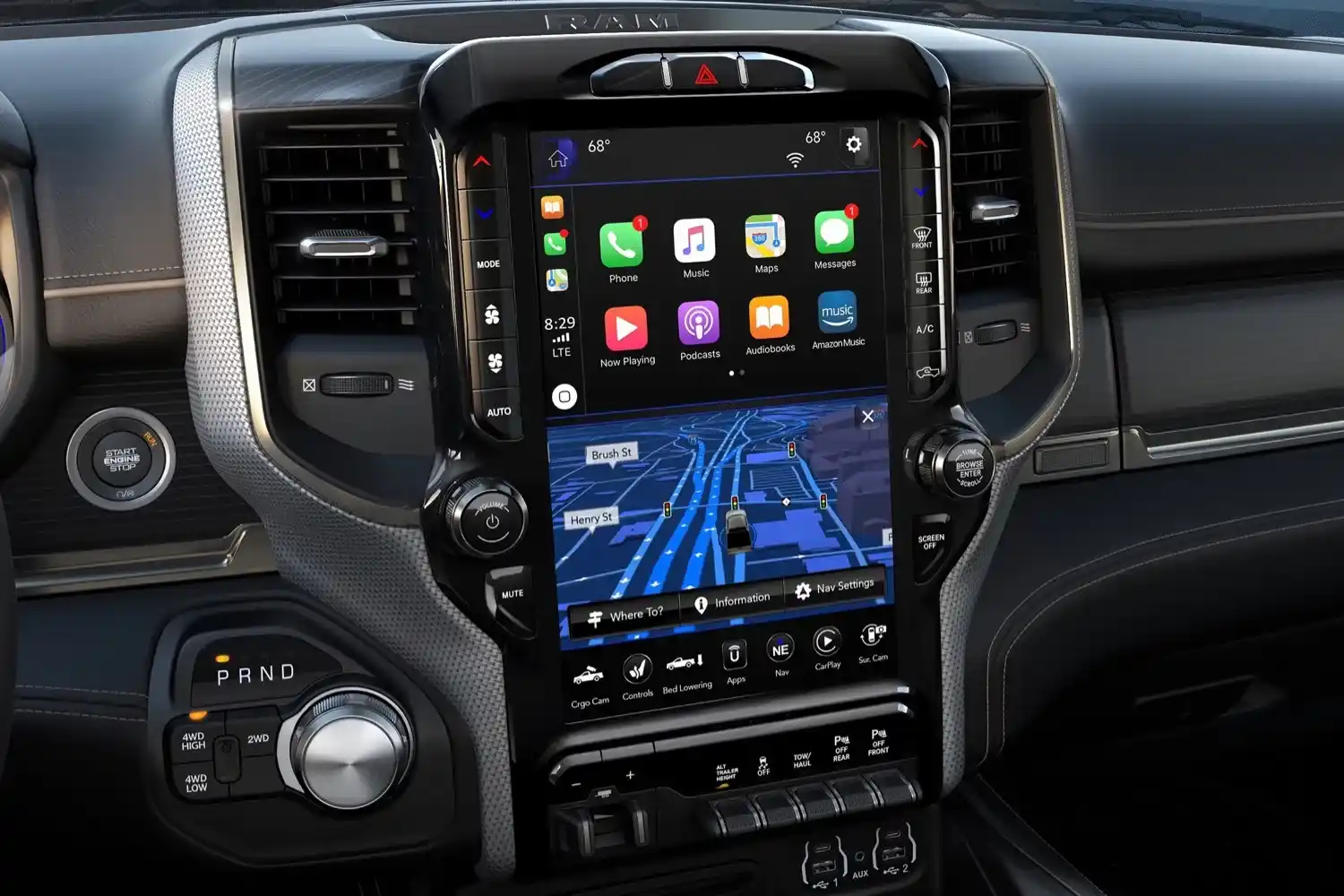

The Growing Challenge of Large Infotainment Screens in Nigerian Cars
In recent years, the automotive industry has witnessed a remarkable shift towards larger and more sophisticated touchscreen infotainment systems. These high-tech screens have become a focal point in modern vehicles, offering a wide array of features and functions to enhance the driving experience. While these innovations are undoubtedly exciting, they pose unique challenges for Nigerian car owners. This article delves into the reasons behind the surge in large infotainment screens, the issues they present for drivers in Nigeria, and what steps can be taken to address these concerns.
Why Car Touchscreens are Getting Bigger
Advancements in Display Technology
The primary reason for the proliferation of larger touchscreen infotainment systems in vehicles is the constant evolution of technology. Cars today are equipped with an increasing number of tertiary display functions, such as music controls, ambient lighting adjustments, internet connectivity, and navigation systems. To navigate through these multifaceted functions using traditional buttons and knobs would be cumbersome and time-consuming. Consequently, responsive touchscreen interfaces emerged as the solution of choice for simplifying the user experience, making them the new standard for modern vehicles.
Enhancing Aesthetics
Another driving force behind the adoption of larger touchscreen displays is the desire to enhance the overall aesthetics of the car’s interior. These screens not only serve a practical purpose but also contribute to the visual appeal of the vehicle. Prominent examples include the Mercedes-Benz EQC and the Tesla Model S, which boast expansive screens that seamlessly blend with the vehicle’s interior, giving a sense of sophistication and modernity.
Issues with Bigger Touchscreens for Nigerian Car Owners
Distraction for Drivers
One of the most significant issues posed by large touchscreen infotainment screens is the potential for driver distraction. These screens are designed to be engaging, with touch sounds and voice-guided features that captivate the driver’s attention. In Nigeria, as in many parts of the world, distracted driving is a leading cause of accidents. The Tesla, for instance, centralizes approximately 90% of the car’s onboard functions through its touchscreen, making it almost impossible for the driver to ignore the alluring display. Research conducted by the Transport Research Laboratory in 2020 found that simple tasks like selecting a track on Spotify can divert a driver’s attention from the road for as long as 20 seconds, a duration in which the most severe accidents can occur. Automakers are actively working to counteract this problem by integrating safety and warning features.
Challenges with Foreign Used Cars
Nigeria has a unique automotive landscape, where a significant portion of cars purchased are foreign used vehicles that have been on the road for 6 or 7 years in other countries. This presents a challenge when it comes to large touchscreen infotainment systems. Over time, these systems may lose their sensitivity, leading to a compromised user experience. Furthermore, these screens are often constructed from fragile materials, making them susceptible to damage. When an original screen breaks, replacement can be both costly and cumbersome. The fragility of these screens significantly impacts the market for foreign used cars in Nigeria, potentially rendering vehicles incomplete or in need of costly repairs.
Incompatibility with Nigerian Internet Infrastructure
Many modern cars equipped with full touchscreen infotainment systems rely on cloud-based features, which may not function correctly in Nigeria due to infrastructure limitations. For example, Tesla has blacklisted cars shipped to Nigeria because it cannot extend its cloud-based services to these vehicles. Consequently, some functions, such as ordering parts and locating the nearest charging station, become inoperable. While these advanced features are made possible by the large touchscreen displays, their utility is severely diminished in regions where the necessary internet infrastructure is lacking.
What Can Nigerian Car Owners Do?
In light of these challenges, it is essential for Nigerian car owners to consider their options when it comes to vehicles equipped with large infotainment screens:
- Avoiding Cars with Large Touchscreen Infotainment Systems: When buying foreign used cars, it may be prudent to steer clear of vehicles with oversized touchscreen infotainment systems. This can help mitigate potential issues related to sensitivity loss and screen fragility.
- Protective Measures: If you already own a car with a large touchscreen display, take proactive measures to protect it. Inform your passengers about the screen’s fragility and encourage them to be cautious while inside the vehicle. Avoid throwing objects, making sudden movements, or leaning on the dashboard to prevent screen damage. When cleaning the interior, ensure that water or cleaning solutions do not come into contact with the screen.
Conclusion
Large infotainment screens are undoubtedly a part of the automotive future, offering advanced technology and enhanced user experiences. However, adapting to these changes in Nigeria presents unique challenges. The proliferation of larger touchscreen displays in vehicles can lead to driver distraction, incompatibility issues with foreign used cars, and limitations related to cloud-based functions. To address these challenges, Nigerian car owners should make informed choices when purchasing vehicles and take steps to safeguard their existing touchscreen systems. As technology continues to evolve, it is vital for the Nigerian automotive market to prepare for the integration of larger screens and ensure that the benefits they offer are maximized while minimizing potential drawbacks
Add a comment Cancel reply
Comments (0)
Categories
- Biography (4)
- Car Reviews (31)
- Car Tips (53)
- Classic Cars (45)
- Net Worth (12)
- Transportation (19)
Recent Posts
Related posts


Top 5 Reliable Car Dealerships in Lagos: Your Ultimate Guide

How to Buy a Tokunbo Car in Nigeria Without Getting Scammed








